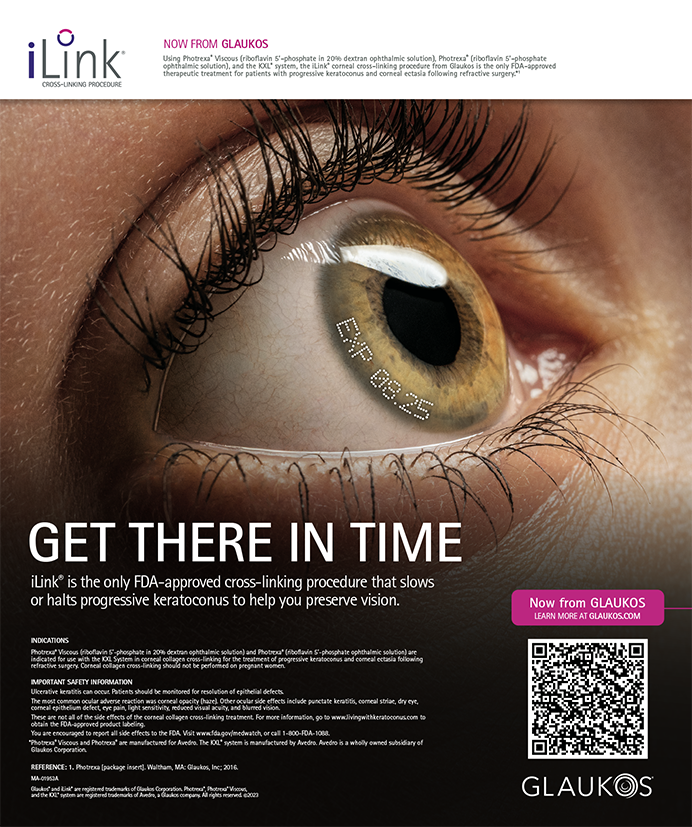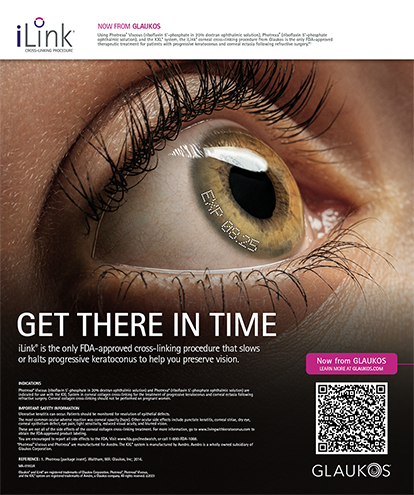LASIK podcasting? Cataract surgery video on demand? Dry eye text messages? Pay-per-click advertising for refractive lens exchange? U-tube.com for your next presbyopia-correcting IOL campaign?
In an ever popular and ever changing "e" world of electronic and digital gadgetry, refractive practices now face the daunting challenge of where to invest their limited advertising budgets for 2007. Fall is usually the time when practices evaluate their media planning for the previous 9 to 10 months, because looking back often gives a decent indication of how to go forward.
THE DIFFERENCE OF BEING ORGANIZED
Administrators in an organized refractive practice will easily be able to determine how effective their radio advertising campaigns were in 2006. They will know which stations worked best for their practice, which specific messages generated the most inquiries, and which campaigns netted the highest patient conversion to surgery. The same will hold true for their print campaigns, TV advertising, direct mailings, and any other traditional media campaigning they undertook the previous year.
Less-than-organized refractive administrators will look back at their six-figure refractive advertising expenditure and wonder, "how well did our advertising work in 2006?" "What should we do in 2007?"
For those who find themselves in the latter category, look for advice a little later in this article. (In fact, maybe you should skip down to that section right now, because in my opinion there's no need to consider advertising in 2007 until you get your advertising house in order!)
IS TECHNOLOGY CHANGING THE GAME?
For organized administrators, the glance back serves as a quick reference for where to invest advertising dollars in the upcoming year. However, thanks to the electronic age in which we find ourselves, it's simply … not that simple. What about all the new media? There seems to be more buzz about the potential of new media than there is about the effectiveness of the old media.
Here's my take on the new media: relax. At this stage, it's more buzz than bite. And, what you need is bite in your advertising. You need every single dollar to result in a more-or-less immediate call to action. You want to make an offer in the morning and be generating calls that afternoon. What you don't want is to look cool with your new media, only to end up with egg all over your cool new look when it fails to deliver.
FOLLOW THE CROWD
If you really want to know where to invest your refractive advertising dollars in 2007, look no further than Sprint, Verizon, Gatorade, BMW, Ford, Mercedes, McDonald's, and virtually every major business to see where their dollars are being spent. Sure, these companies are doing their fair share of podcasting, video on demand, text messaging campaigns, product displays in movies, and video trailers, but the bulk of their advertising dollars are still spent on traditional media: TV; radio; newspaper; magazines; billboards; and yes, even direct mail.
If you think about how you receive and respond to advertising messages, the bulk of it is absolutely not in the form of e-media. We are still being bombarded by TV campaigns for new cars, direct mailed for new credit cards, shouted at from the radio every morning for offers of new cell phone purchases, and distracted by billboards on the freeways. Why? Because, believe it or not, traditional advertising still works. We keep watching and buying, and they keep placing more ads.
TRADITIONAL IS NARROWING
At a seminar just last month, a client in a small market invested $15,000 in a radio and print campaign promoting a free LASIK seminar. The result: 192 people showed up! Granted, the client was offering a free LASIK drawing. But, convincing 192 individuals to get off their couches, into their cars, and to an eye center in East Texas proves to me that conventional media?and the overall LASIK market?is anything but dead.
Nevertheless, the window for traditional advertising is narrowing. For the next year or 2, it will be open wide enough to warrant the majority of refractive advertising dollars. Surely, however, the new media are gaining ground. Each month, the public falls a little more in love with the electronic gadgetry flooding the market. Eventually, the new e-media will surpass some or even all of what you and I have known as traditional media resources.
Last year, the satellite radio industry warned it would put traditional radio out of business. The lure of advertising-free radio would eventually turn all of the free-radio listeners into paid satellite radio subscribers. This prediction has not come true although it may in a few years. For now, a strong percentage of the public is still unwilling to pay monthly fees to listen to the radio.
Podcasting is experiencing the same effect. Yes, it's available. Yes, it's sexy. No, it's not a place to invest your refractive advertising dollars?yet. I recommend the same for virtually every other type of e-media, with the one exception of the Internet. We now have a much greater appreciation and understanding of the power and scope of the Internet's market. We have seen how pay-per-click advertising can generate substantial leads on a weekly basis. We have also seen how proper Web site design can turn ophthalmic practices' site visitors from educational browsers to e-mail responders and eventual patients. After all, this is what you want from your Web site?potential patients instead of visitors. The Internet is one area to increase your investment in 2007. Upgrade your look, enhance your search engine, engage visitors, make offers, and track every click and visitor. Once you have designed a Web site that converts visitors to patients, pay to promote it in all your advertising.
COOL ON E-MEDIA FOR NOW
Regarding virtually every form of e-media other than the Internet, relax. Certainly, learn how they work and watch their development, but follow the leaders when it comes to major media buying. When large branded companies stop advertising on the radio, you'll know it's time to switch. Do the same for television, magazines, and newsprint. Trust me, their research is a lot more extensive than mine or yours, and they're at least 6 to 12 months ahead of the curve. When they make a move, you can thank them for their research and all the dollars they spent while waiting for the new e-media to come up to speed.
REFRACTIVE MARKET FORECAST
The good news about 2007 is that the LASIK and lens implant markets will remain as strong as ever. Yes, there will be dips in the LASIK market, but simply in response to the leading economic indicators, consumer spending, and consumer confidence indices, etc. Amazingly, when the economy is up, LASIK seems to be up. When it's down, LASIK dips. Don't sweat the small stuff, but stay on top of market trends.
Just as the window for traditional media is narrowing, so is the profit margin for LASIK. I doubt we'll ever see higher fees for LASIK than right now, so get out there with a strong campaign using conventional media. The message for LASIK in 2007 will be affordability. Note that I didn't say pricing. Affordability is the ability to make a $2,250-per-eye LASIK procedure seem within means with 0 financing, low monthly payments, and no money down or no payments for 6 months. Economic indicators will drive the LASIK market in 2007, and money will be on everyone's mind. There's no need to lower or promote your price when incredible financing offers will do the trick.
Considering the new premium IOLs and lens implants, demographics continue to prove that the 50 age group market will dominate the patient landscape in 2007 and into the next decade. The growth in lens development, combined with increased marketing and patient education, will pave the way for what many of us believe will be the most lucrative times in cataract and refractive surgery history for surgeons and their practices.
As for you refractive administrators who haven't a clue about your cost-per-lead-per-media and lack the other tracking information necessary for making intelligent, calculated decisions about your refractive marketing budgets in 2007, you might consider Vegas, Reno, or the nearest gambling boat. Tracking one of the biggest investments your practice will make in 2007 should not be an option or a goal; it has to be a given. This is not rocket science, but it does take some dedication, time, and effort. Just follow Larry The Cable Guy's advice and "Git-er-done!"
Michael W. Malley is President and Founder of the Centre for Refractive Marketing (CRM Group), an ophthalmic consulting/advertising agency established in 1988. Mr. Malley may be reached at (713) 839-0202; mike@refractivemarketing.com.


